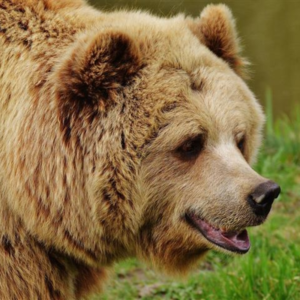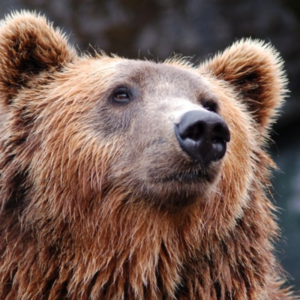Animals
Bears and Their Amazing Skills
The Untold Wonders of Nature’s Most Formidable Mammals
When we think of bears, images of powerful creatures roaming the wilderness often come to mind. Yet, beyond their formidable presence, bears are fascinating animals with incredible skills that make them some of the most adaptable and intelligent creatures on Earth. This article delves into the amazing abilities of bears, highlighting their survival tactics, intelligence, and the unique skills that set them apart in the animal kingdom.
1. The Intelligence of mamals are bears
Bears are not just large and strong; they are also remarkably intelligent. In fact, their cognitive abilities are often compared to those of primates. Bears are known for their problem-solving skills, particularly in the wild, where they must find food, protect themselves, and care for their young.
Problem-Solving Skills: One of the most remarkable examples of a bear’s intelligence is its ability to solve complex problems. In captivity, bears have been observed using tools to obtain food—a trait once thought to be exclusive to primates. For example, bears have been seen using sticks or rocks to knock down food that is out of reach. In the wild, they must often figure out how to access food sources, such as breaking open logs to find insects or using their strength to turn over large rocks to reach prey hiding underneath.
Memory and Navigation: Bears also have an excellent memory, which is crucial for their survival. They can remember the locations of food sources, even if they have not visited them for years. This ability is especially important for bears that live in environments where food availability is seasonal. For instance, grizzly bears in North America can remember the locations of salmon streams and berry patches, returning to them year after year.

2. The Physical Abilities of Bears
While their intelligence is impressive, the physical prowess of bears is equally awe-inspiring. Bears possess a combination of strength, speed, and endurance that allows them to dominate their environments.
Strength and Power : Bears are among the strongest animals in the world. A grizzly bear, for instance, can lift over 1,000 pounds (about 454 kilograms), which is more than its own body weight. This incredible strength is not just for show; it allows bears to hunt large prey, defend themselves from predators, and perform impressive feats such as breaking trees or moving large rocks.
Speed and Agility: Despite their massive size, bears are surprisingly fast and agile. A grizzly bear can run at speeds of up to 35 miles per hour (about 56 kilometers per hour), making them one of the fastest animals in the forest. Their agility is also remarkable; bears can climb trees, swim long distances, and navigate rough terrain with ease. This combination of speed and agility makes bears highly effective hunters and allows them to escape danger when necessary.
3. Bears’ Unique Hunting and Foraging Skills
Bears are omnivores, which means they eat both plants and animals. However, their hunting and foraging techniques are as diverse as their diets, demonstrating their adaptability and resourcefulness.
Fishing Skills: One of the most iconic images of bears is that of them catching salmon in the wild. Bears are excellent fishers, using their sharp claws and quick reflexes to snatch fish out of the water. This skill is especially important for species like the brown bear, which rely heavily on fish as a food source during certain times of the year. Bears have been observed standing still in rivers, waiting patiently for the perfect moment to strike, showcasing their precision and patience.
Foraging for Plants: In addition to hunting, bears are skilled foragers. They have a keen sense of smell, which allows them to locate food sources from miles away. This is particularly useful when they are searching for berries, nuts, or other plant-based foods. Bears use their claws to dig up roots and their powerful jaws to crush hard-shelled nuts. Their foraging skills are vital for their survival, especially during the months leading up to hibernation when they need to build up fat reserves.
4. Communication and Social Skills
While bears are often solitary animals, they do have a complex system of communication and social interaction, especially during mating season or when raising their young.
Vocalizations and Body Language: Bears use a variety of vocalizations and body language to communicate with each other. Growls, roars, and grunts are common vocalizations that convey different messages, such as warnings, threats, or calls to mates. Body language, such as standing on hind legs or showing teeth, is also used to assert dominance or deter potential threats. Understanding these communication methods is crucial for researchers studying bear behavior in the wild.
Maternal Instincts: The maternal instincts of bears are another testament to their complex social skills. Mother bears are incredibly protective of their cubs and will go to great lengths to ensure their safety. They teach their young essential survival skills, such as hunting, foraging, and recognizing dangers. This period of learning is crucial for the cubs’ survival and is a fascinating aspect of bear behavior.

5. Adaptability to Changing Environments
One of the most amazing skills of bears is their ability to adapt to changing environments. Whether it’s climate change, habitat loss, or changes in food availability, bears have demonstrated an incredible ability to survive and thrive in different conditions.
Hibernation: Hibernation is one of the most well-known survival strategies of bears. During the winter months, when food is scarce, bears enter a state of hibernation, lowering their body temperature and metabolism to conserve energy. This adaptation allows them to survive long periods without food, using their stored fat reserves. The ability to hibernate is a remarkable evolutionary trait that has enabled bears to survive in harsh climates.
Urban Adaptation: As human activity encroaches on natural habitats, some bear species have adapted to urban environments. They have learned to scavenge from human garbage, navigate urban landscapes, and avoid direct encounters with people. While this adaptation is a testament to their resilience, it also poses significant challenges for wildlife management and conservation efforts.
Conclusion
Bears are truly remarkable creatures with a wide range of skills that highlight their intelligence, strength, and adaptability. From their problem-solving abilities and hunting techniques to their social interactions and adaptability to changing environments, bears continue to amaze researchers and wildlife enthusiasts alike. As we continue to study and understand these incredible animals, it becomes clear that there is still much to learn about the hidden talents of one of nature’s most formidable mammals.


